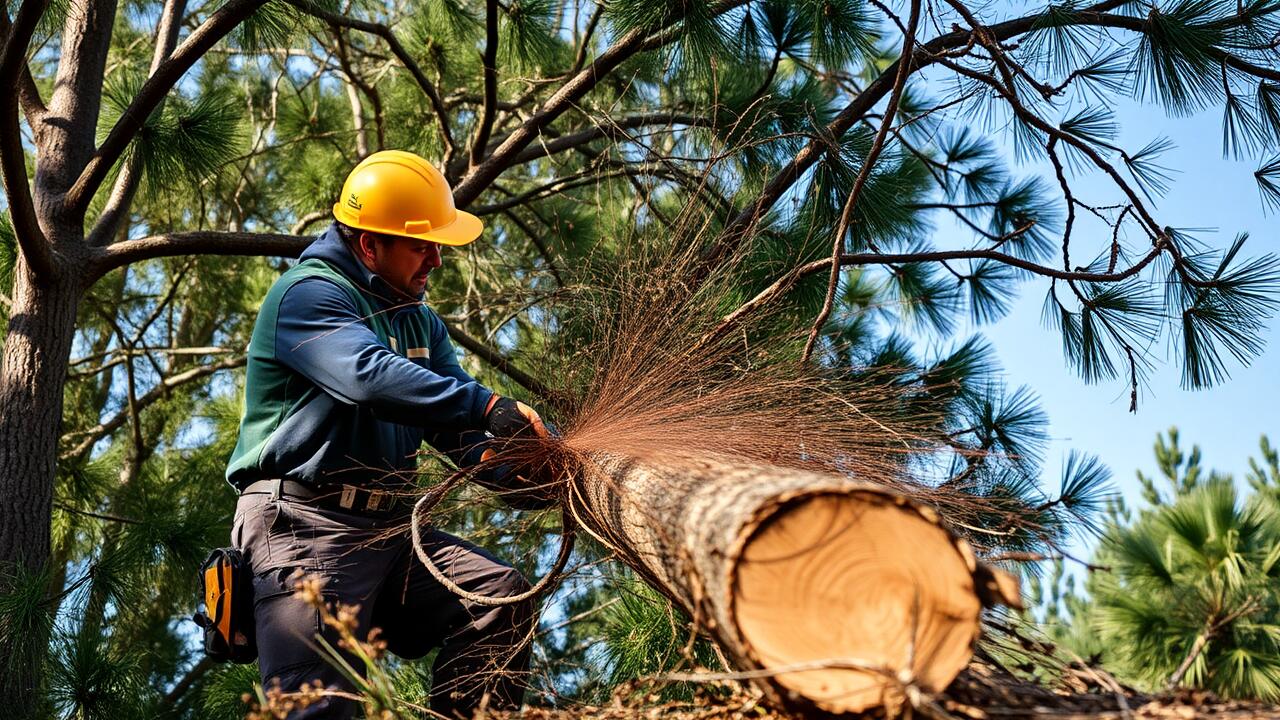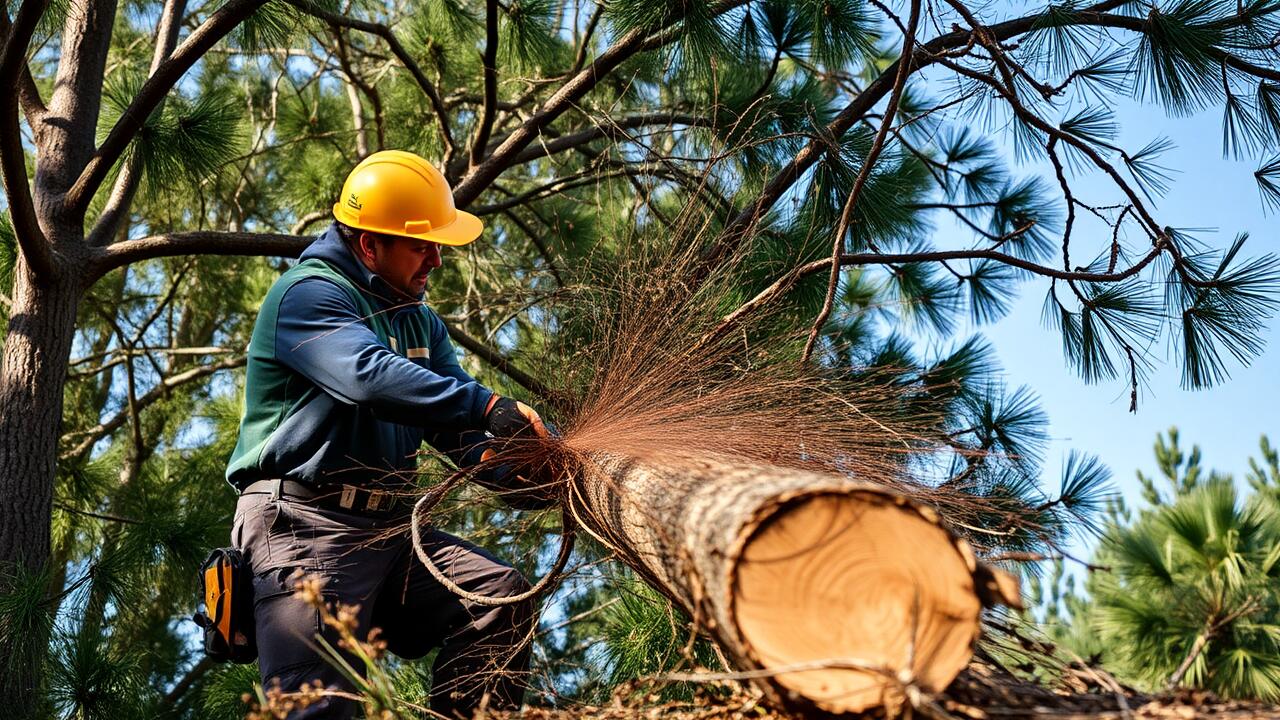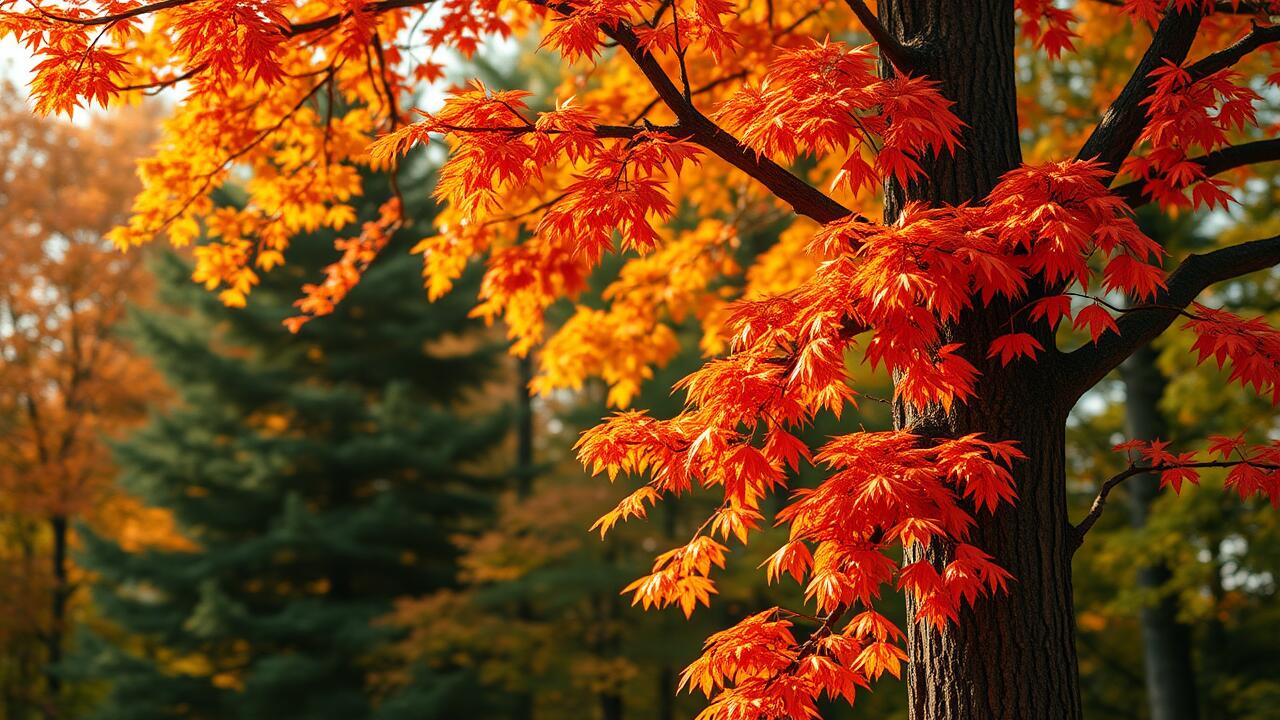
Table Of Contents
Permits Required for Tree Removal
In New Zealand, cutting down native trees typically requires a resource consent, especially if the trees are protected under local council regulations. Different regions may impose varying restrictions, with native trees often classified as significant due to their ecological and cultural value. In areas such as Howick, Auckland, residents planning for tree removal should consult the local council to ensure compliance with any specific permits needed for tree removal.
The application process for obtaining the necessary permits can be complex, demanding detailed information about the tree species, their condition, and reasons for removal. Additionally, the council may require an assessment of the site’s ecological impact. Failing to adhere to these regulations can result in substantial fines or legal repercussions, making it vital for property owners to understand the requirements before proceeding with any Tree Removal in Howick, Auckland.
The Application Process for Tree Removal
Applying for tree removal in New Zealand involves a structured process that varies depending on local regulations. Property owners in Howick, Auckland, must initially consult their council's guidelines to determine if the trees in question are classified as native. If permits are necessary, completing the required application forms is essential, along with providing relevant details and supporting documentation, such as photographs and plans indicating the tree's location.
Public notification may be required as part of the application process. This ensures that neighbours and affected parties can voice any concerns regarding the proposed removal. The council will assess the application, considering factors like ecological significance and potential impact on the local environment. Adhering to this process helps to safeguard native trees and the ecosystems they support while allowing property owners to manage their land effectively.
Consequences of Cutting Down Native Trees
Cutting down native trees can have far-reaching consequences for both the environment and local biodiversity. Native trees play a crucial role in sustaining various ecosystems, providing habitat and food for numerous native species. The removal of these trees disrupts the balance of the local environment, potentially leading to the decline of certain flora and fauna. In areas like Howick, Auckland, where ecosystems are already vulnerable, the impact of tree removal is particularly pronounced as it can lead to increased soil erosion and altered water cycles.
The implications extend beyond immediate ecological disruption. Many native trees are culturally significant, valued for their historical and spiritual importance to Māori communities. The act of removal can therefore also represent a loss of cultural heritage. In communities where tree removal in Howick, Auckland, increases, public sentiment often shifts, highlighting the need for sustainable practices that prioritise both environmental health and cultural respect. This growing awareness underscores the importance of considering the long-term consequences before deciding to cut down native trees.
Environmental Impact and Biodiversity Loss
Cutting down native trees can lead to significant environmental consequences. New Zealand's native forests sustain a unique array of wildlife and plant species, many of which are found nowhere else on Earth. The removal of these trees disrupts their habitats, leading to declines in biodiversity and the potential extinction of vulnerable species. In regions like Howick, Auckland, where ecosystems already face various pressures, tree removal exacerbates the fragility of local environments, making restoration efforts more challenging.
Additionally, the loss of native trees affects the health of the surrounding ecosystem. Trees play a vital role in air and soil quality, as well as in the regulation of water cycles. In Howick, Auckland, vegetation like native trees contributes to carbon sequestration and mitigates flooding by slowing down surface runoff. Their removal compromises these ecological functions, resulting in a less resilient environment that struggles to support both human and wildlife communities.
Alternative Options to Tree Removal
Considering the ecological significance of native trees, many property owners in New Zealand explore alternatives to complete removal. Pruning is an effective way to manage tree health and shape without sacrificing the benefits these trees provide. Proper pruning techniques can enhance sunlight exposure and reduce risks associated with disease or pest infestations. Engaging a qualified arborist can ensure that the trees remain healthy while achieving the desired aesthetic.
In situations where tree removal in Howick, Auckland, seems inevitable, other management techniques could be beneficial. Thinning, for example, allows for improved air circulation among trees, which can foster a healthier environment overall. Additionally, implementing companion planting can help maintain biodiversity and support surrounding ecosystems. These methods not only address immediate concerns but also work towards preserving the natural landscape for future generations.
Pruning and Other Management Techniques
Pruning native trees can be an effective way to manage their growth while preserving their ecological value. This technique helps maintain the health and appearance of trees without the need for complete removal. Regular pruning can encourage stronger branches, promote better air circulation, and reduce the risk of disease. Practising responsible pruning methods not only benefits the trees but also contributes to the overall health of the local ecosystem.
When considering tree management, exploring alternatives to removal can yield positive outcomes for both property owners and the environment. Options such as selective thinning can help create space for new growth while maintaining a diverse canopy. In Howick, Auckland, residents are encouraged to consult with local experts who understand the specific requirements and best practices for native species. This collaborative approach ensures the preservation of local biodiversity and protects the natural heritage of the area.
FAQS
Do I need a permit to cut down native trees on my property in New Zealand?
Yes, you typically need a permit to cut down native trees on your property in New Zealand, as they are protected under various laws and regulations. Check with your local council for specific requirements.
What is the application process for obtaining a tree removal permit?
The application process generally involves submitting a request to your local council, providing details about the tree(s) you wish to remove, and explaining the reasons for the removal. You may also need to provide an assessment from an arborist or ecologist.
What are the consequences of cutting down native trees without permission?
Cutting down native trees without permission can result in significant penalties, including fines and restoration orders. Additionally, it may lead to negative environmental impacts.
How does cutting down native trees affect the environment?
Removing native trees can lead to biodiversity loss, habitat destruction for native wildlife, and soil erosion. It can also disrupt local ecosystems and the natural balance.
What are some alternative options to cutting down native trees?
Alternatives to cutting down native trees include pruning for maintenance, managing the health of the trees through proper care, and considering relocation if necessary. Consulting with a professional arborist can provide further guidance.

